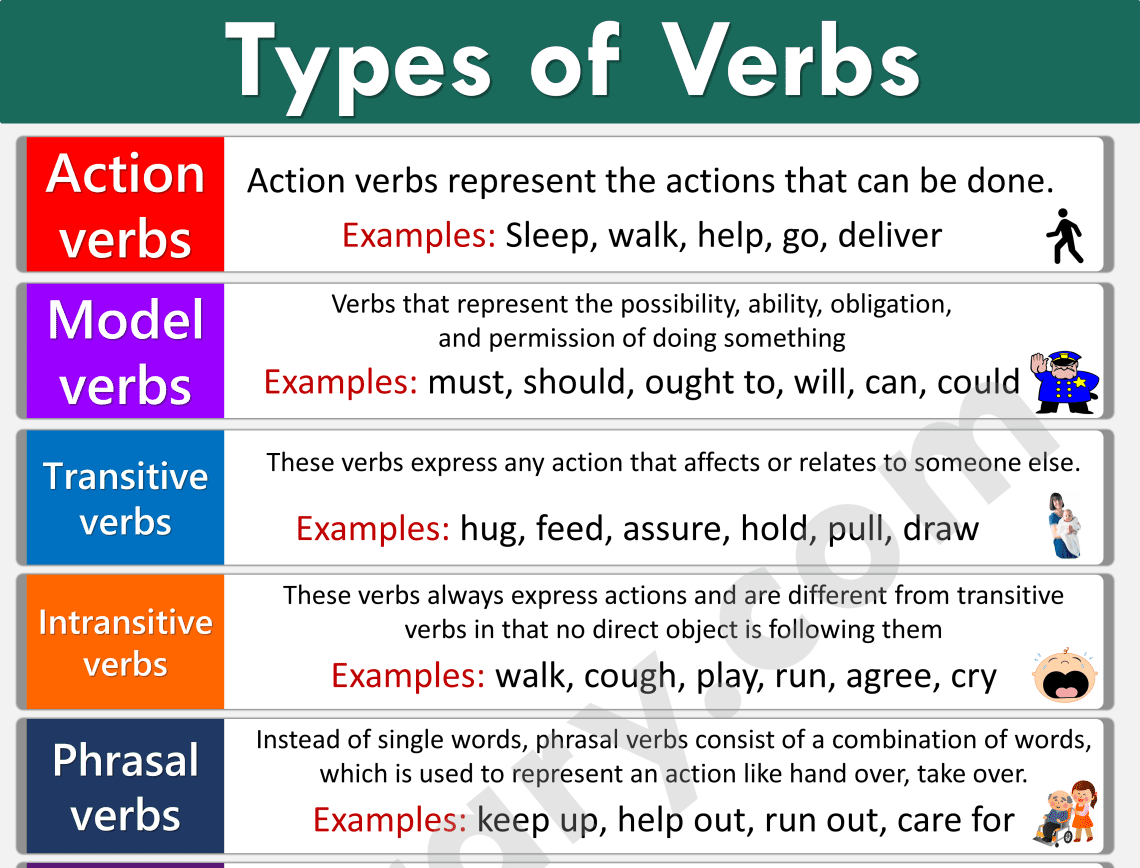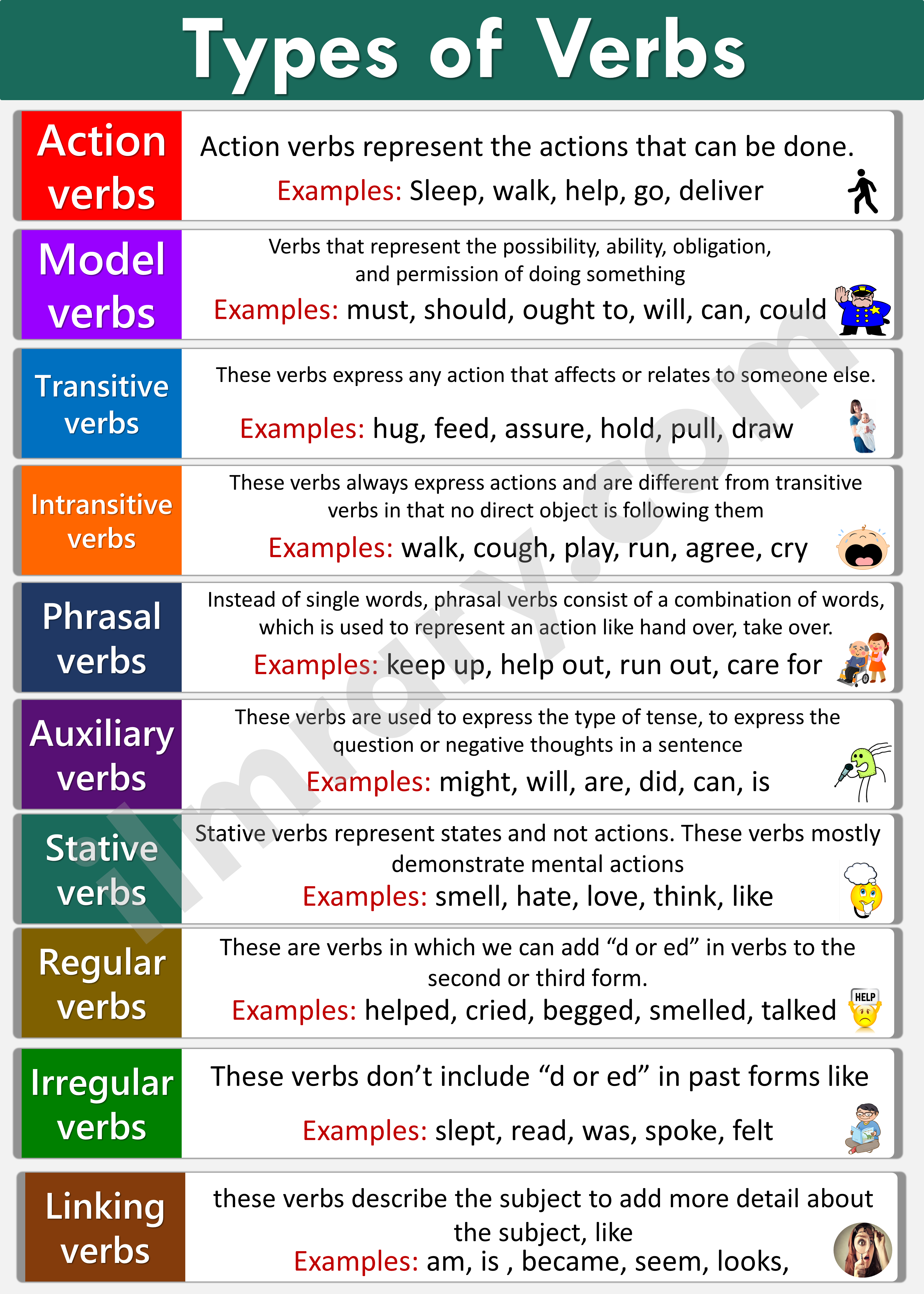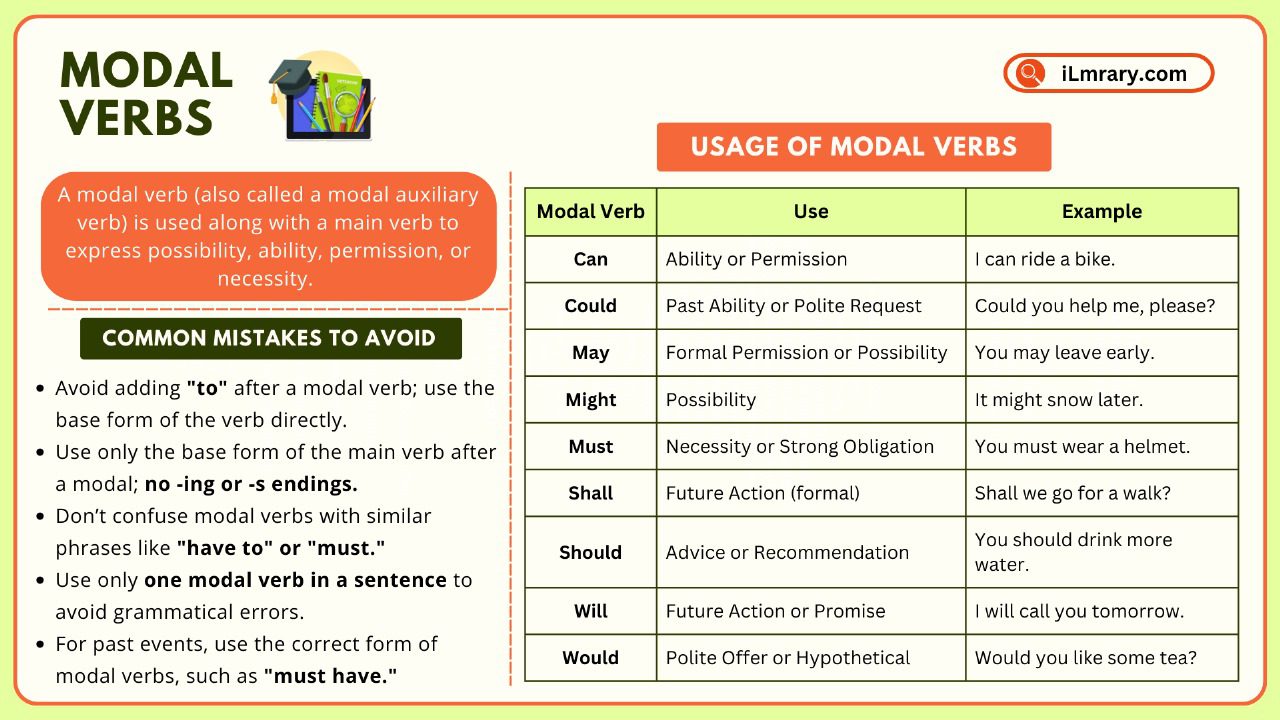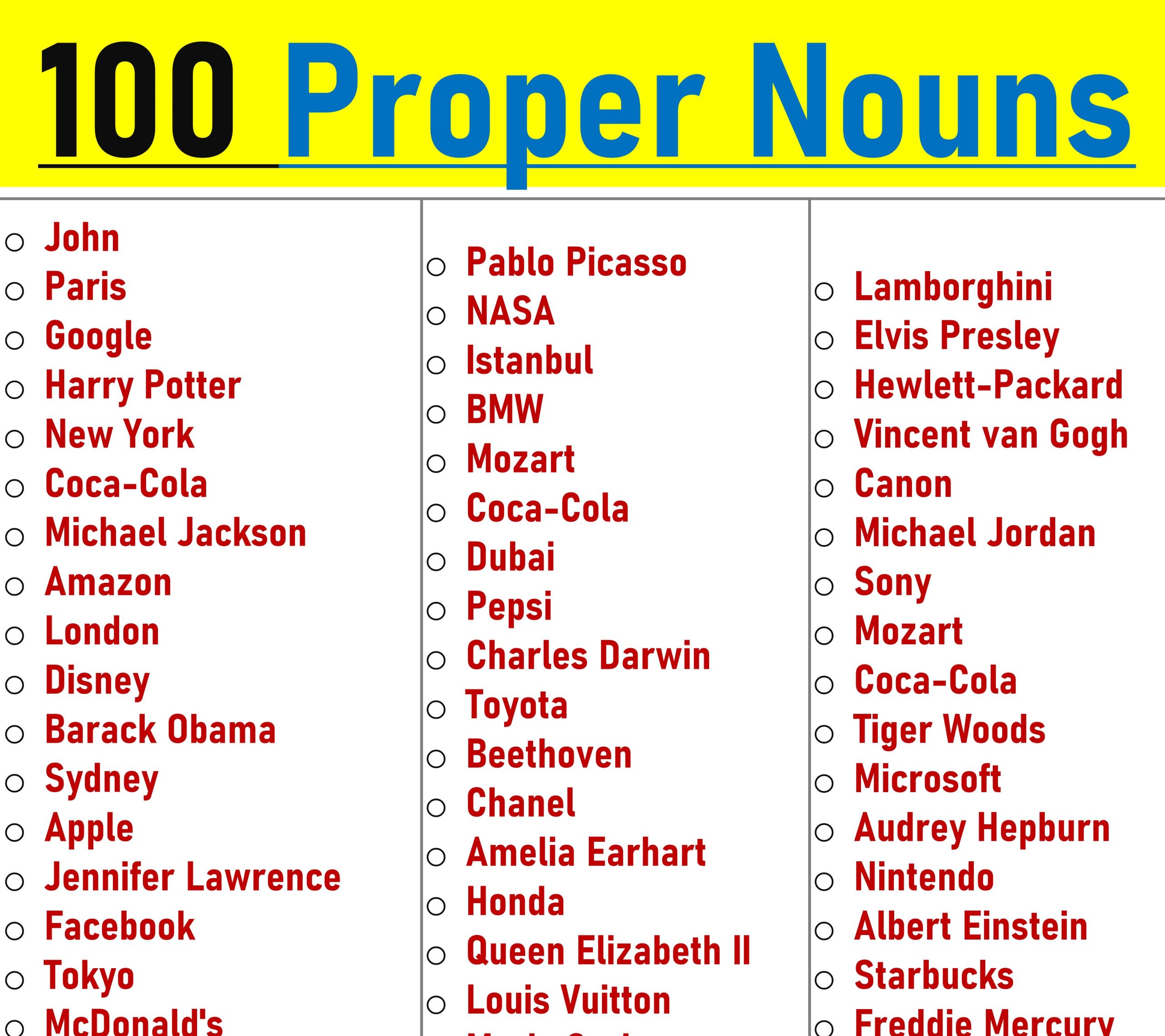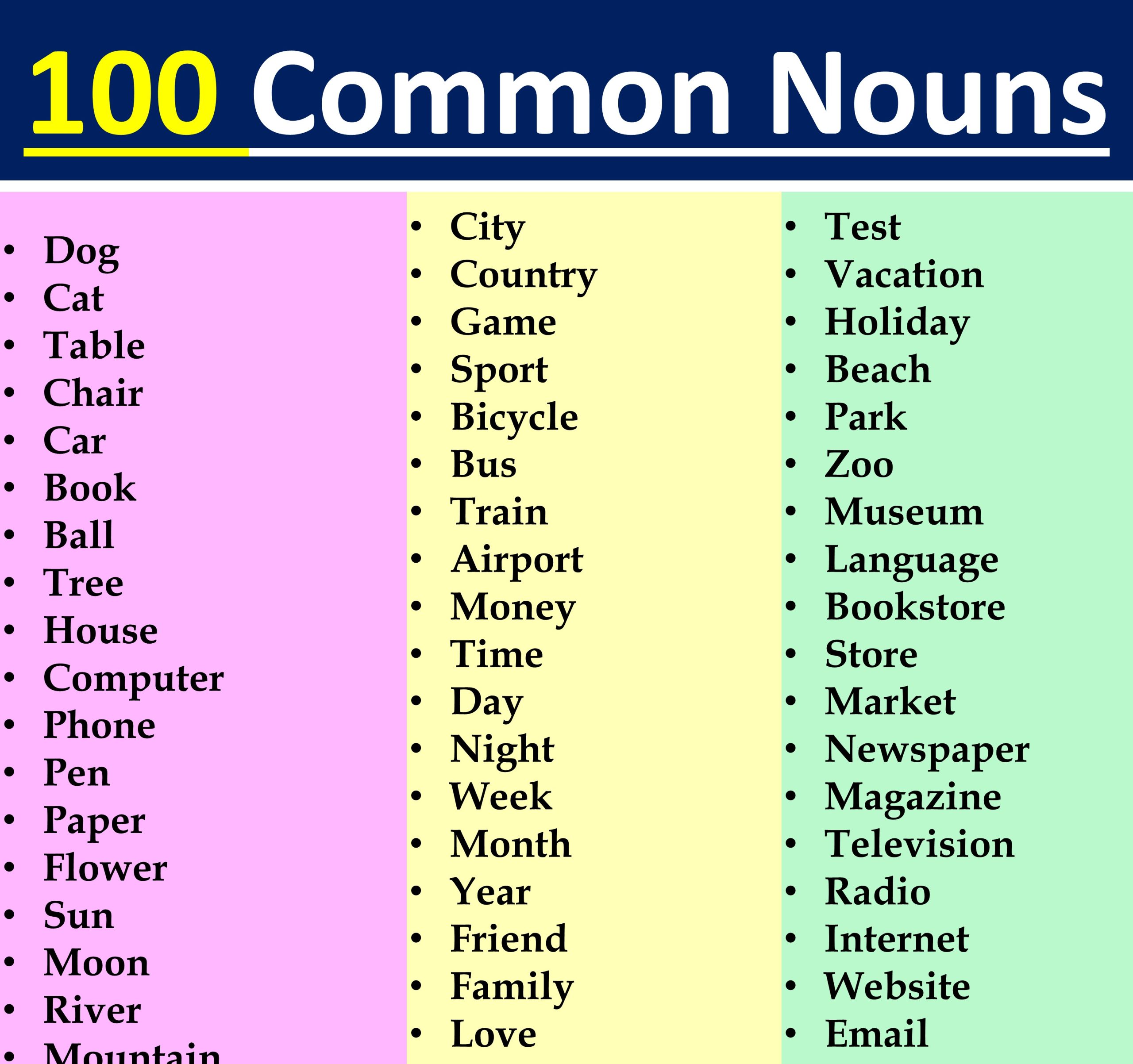Verbs are essential components of any sentence. They describe an action or state that is happening, has happened, or will happen. Verbs can be categorized into different types based on their function in a sentence.
Learning about these verb types can help you understand English grammar better and use verbs correctly in daily communication. In this article, we will explore the different types of verbs in English with examples to make it easier for you to grasp these concepts.
Contents
What is a Verb?
A verb is a word that describes an action, state, or condition in a sentence. It tells us what the subject is doing or what is happening to the subject. Verbs are essential components of every sentence.
- Ahmad runs every morning.
- She feels excited about the trip.
- They are going to the market.
- I have finished my homework.
- The teacher teaches English.
Types of Verb
- Action Verbs
- Model Verbs
- Transitive Verbs
- Intransitive Verbs
- Phrasal Verbs
- Auxiliary Verbs
- Stative Verbs
- Regular Verbs
- Irregular Verbs
- Linking Verbs
- Compound Verbs
1. Action Verbs
Action verbs represent physical or mental actions. These verbs describe activities that can be seen or felt, such as walking, eating, thinking, or dreaming.
Examples:
- Run: Ahmad runs every morning.
- Eat: Maria eats her lunch at 12 PM.
- Think: Ali thinks about his future plans.
Action verbs describe what someone does and can either be physical or mental. For example, “run” describes a physical action, while “think” refers to a mental activity.
2. Model Verbs
Model verbs are a type of auxiliary verb that express possibility, necessity, permission, or ability. These verbs help modify the main verb in the sentence and give additional meaning about how something happens or is possible.
Examples:
- Can: Sara can swim very well.
- Must: You must complete your homework before you play.
- Should: You should study for your exams.
These verbs add meaning about the likelihood or requirement of an action. For example, “can” expresses ability, while “must” indicates necessity.
3. Transitive Verbs
Transitive verbs require a direct object to complete their meaning. These verbs transfer the action to someone or something.
Examples:
- Love: Omar loves his family.
- Send: Fatima sends a letter to her friend.
- Teach: Mr. Ahmed teaches English to the students.
In each of these sentences, the verb (love, send, teach) affects the object (family, letter, students). Without an object, the sentence would be incomplete.
4. Intransitive Verbs
Unlike transitive verbs, intransitive verbs do not require a direct object. These verbs describe actions that are complete in themselves.
- Sleep: Zainab sleeps peacefully at night.
- Arrive: We arrived late to the party.
- Laugh: The children laughed at the joke.
Intransitive verbs describe actions that don’t transfer to an object. They can stand alone in a sentence without needing something else to complete their meaning.
5. Phrasal Verbs
Phrasal verbs are combinations of verbs with one or more particles (prepositions or adverbs). These combinations create new meanings that are different from the individual words.
- Turn off: Please turn off the lights when you leave.
- Look after: She looks after her little brother.
- Give up: Ali gave up smoking last year.
Phrasal verbs often have idiomatic meanings. For instance, “turn off” means to stop something from working, and “look after” means to take care of someone.
6. Auxiliary Verbs
Auxiliary verbs, also known as helping verbs, assist the main verb in a sentence to form questions, negatives, or different tenses. These verbs help express time, aspect, mood, and voice.
- Have: I have finished my homework.
- Will: We will go to the park tomorrow.
- Can: You can play the piano.
These verbs work with the main verb to provide more details about the time or method of the action.
7. Stative Verbs
Stative verbs describe a state or condition rather than an action. These verbs are usually related to thoughts, emotions, senses, or existence.
- Know: Ahmad knows the answer to the question.
- Believe: I believe in hard work.
- Feel: Mariam feels sad today.
Stative verbs do not describe physical actions but instead describe states of being, emotions, or mental states.
8. Regular Verbs
Regular verbs follow a consistent pattern in their past tense form by adding -ed or -d to the base verb.
- Play: He played football yesterday.
- Walk: Fatima walked to school.
- Cook: I cooked dinner last night.
These verbs are easy to conjugate because they follow a predictable rule for their past forms.
9. Irregular Verbs
Irregular verbs do not follow a simple pattern in their past tense forms. Instead, their past forms can be quite different from their base form.
Go: He went to the market.
- Eat: She ate an apple.
- See: We saw the movie last night.
Irregular verbs require memorization because they do not follow the same -ed pattern as regular verbs.
10. Linking Verbs
Linking verbs do not show action. Instead, they connect the subject of the sentence to more information about the subject, such as a description or identification.
- Is: Ali is tired after the long trip.
- Become: She became a doctor.
- Seem: The weather seems nice today.
These verbs help describe the state or condition of the subject.
11. Compound Verbs
Compound verbs are formed when two or more words are combined to create a new meaning. They can involve a verb and a preposition, or two verbs that work together.
- Babysit: Sana babysits her little brother every weekend.
- Overlook: The manager overlooked the mistake in the report.
- Proofread: He proofreads the essay before submission.
Compound verbs are often used to convey more specific actions than a single verb could express.
Table of Verb Types with Examples
| Verb Type | Example Words | Example Sentences |
|---|---|---|
| Action Verbs | Run, Eat, Think | Ahmad runs every morning. Maria eats lunch at 12. |
| Model Verbs | Can, Must, Should | Sara can swim. You must attend the meeting. |
| Transitive Verbs | Love, Teach, Send | Omar loves his family. Fatima sends an email. |
| Intransitive Verbs | Sleep, Laugh, Arrive | Zainab sleeps well. We arrived early. |
| Phrasal Verbs | Turn off, Give up, Look after | Please turn off the light. She looks after her pet. |
| Auxiliary Verbs | Have, Will, Can | I have completed the task. We will go soon. |
| Stative Verbs | Know, Believe, Feel | I believe in you. She feels happy. |
| Regular Verbs | Play, Walk, Cook | He played football yesterday. She walked to school. |
| Irregular Verbs | Go, Eat, See | He went home. She ate the cake. |
| Linking Verbs | Is, Become, Seem | She is tired. They seem happy. |
| Compound Verbs | Babysit, Overlook, Proofread | He proofreads his work. She babysits her cousin. |
Why Learning Verbs?
Learning verbs is important because they are essential for forming complete sentences and expressing actions, states, or conditions. Verbs help convey what is happening, when it’s happening, and who is performing the action.
Without verbs, sentences would lack meaning. By understanding how to use different types of verbs, you can communicate clearly, express ideas in different tenses, and improve your overall ability to speak and write effectively.
What is an action verb?
An action verb shows an action, such as running, talking, or thinking. It tells you what the subject is doing in the sentence. For example, “Ali reads a book.”
How do model verbs function in a sentence?
Model verbs express ability, permission, or necessity. They help modify the meaning of the main verb. For example, “Sara can dance” shows ability, while “You must study” shows necessity.
What is the difference between transitive and intransitive verbs?
Transitive verbs need a direct object to complete the meaning, while intransitive verbs do not. For example, “He loves his dog” (transitive) and “She laughed loudly” (intransitive).
Can you give examples of irregular verbs?
Irregular verbs don’t follow the regular -ed pattern for past forms. For example, “go” becomes “went” and “eat” becomes “ate.”
What are linking verbs used for?
Linking verbs connect the subject to more information about it, like a state or condition. For example, “She is happy” or “He seems tired.”
You May Also Like


